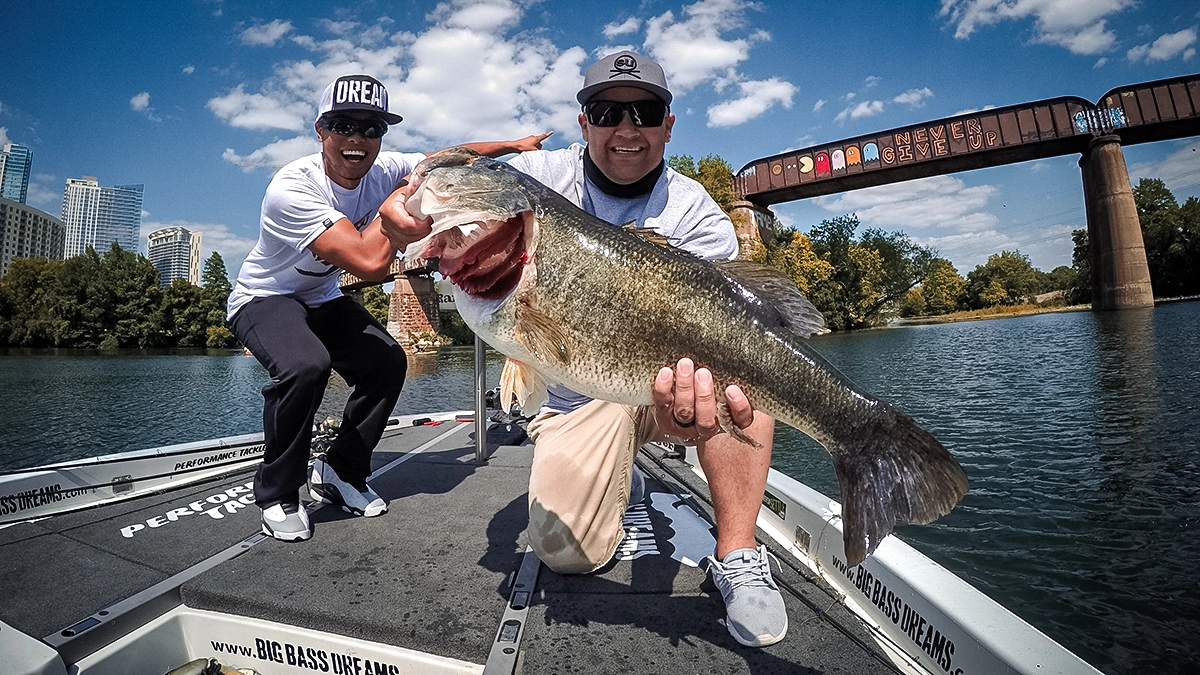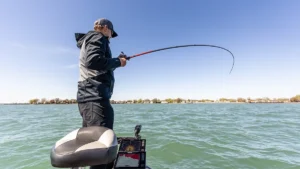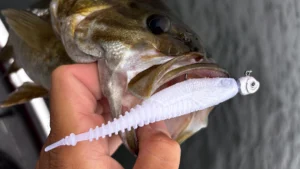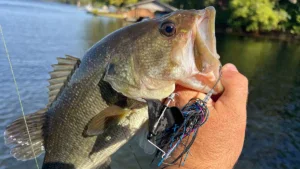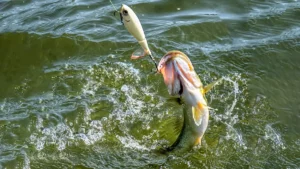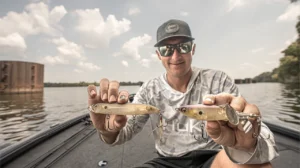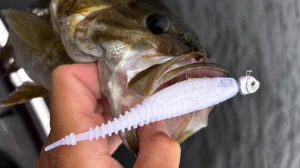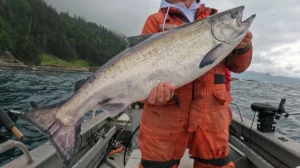Big Bass Dreams — that’s what got my full-time fishing career started. I carved out a niche in the already saturated bass-fishing culture, allowing me to stand out from the crowd. This approach developed organically, since I am always focused on targeting the largest fish in any fishery. This mentality was shaped and reinforced by local influences during my youth, because I grew up fishing around some of the largest bass in the world.
For decades, particularly in the 1990s and 2000s, you could find the largest largemouth in existence within a two-hour radius of downtown Los Angeles. Don’t believe me? Look up the “top 25 bass of all time.” California dominates the list, Southern California in particular. I grew up reading about these trophy catches on a weekly basis in Western Outdoor News and watching TV shows where big-name fishermen would fly to California to shoot episodes targeting these trophy bass. So, growing up so close to the mecca of big bass, naturally I aimed to catch the biggest fish I possibly could.

Unfortunately, a complex list of issues, including but not limited to drought, aging of reservoirs, and their holding capacity being maxed out contributed to their downfall. Part of the problem was the additional strain placed on forage species by competing predators (flatheads, stripers), diminishing or eliminating key prey (including trout stocks). Plus, lack of harvest of bass (a topic for another article), compounded the competition for food and space and contributed to the decline of many trophy fisheries.
However, some of these lakes are experiencing a resurgence. One of my “home” lakes is Lake Casitas, which is one of the Top 25 bass-holding bodies of water where Ray Easley landed a 20.19-pound monster back in 1980. My memories of those early years fishing there with a big bait in hand — that would have been the mid- to late-2000s — are filled with wolf packs of giant largemouths taking turns trying to eat my fake fish as I occasionally blundered into landing one.
Lake Casitas saw a dramatic decline in the 2010s, partly due to the factors I mentioned earlier. Extended drought reduced the lake to just 27% of its normal capacity, forcing us to fish 100 feet below full pool. Tournament weights dropped from 40 to 45 pounds to 14 to 17 pounds. The fishery was a shadow of what it was.

But about two and a half years ago, the lake rose 100 vertical feet to full pool. Biologists refer to this phenomenon as the “new lake effect.” When a lake fills, it brings a surge of nutrients that fuel algae growth, which then supports microscopic animals that feed young game fish and forage species such as threadfin shad. The extra room and food allow bass to grow quickly, with some reaching double digits in just three years. Recently, a 12-pound and a 9-pound bass were weighed in at the local ABA team tournament, with almost 30 pounds needed to win, signaling that the lake is trending back to producing bigger bass.
A similar scenario played out at Lake O.H. Ivie in West Texas. After the drought lowered the water level, the lake refilled, and a few years later, it saw a boom in big bass, drawing hundreds of anglers after word spread. If you do your homework, you may find the next trophy-bass hot spot before anyone else. Here are some likely candidates worth paying attention to.
California

Despite many of our historic trophy largemouth lakes having aged out and dealt with multiple challenges leaving them a shell of their former selves, California is still a big state with big bass opportunities. Cali anglers have long been at the forefront of bass fishing techniques and culture, and the state remains highly relevant in the big bass scene. While fishing has become tougher overall, especially for trophy bass, both anglers and the industry continue to innovate to overcome these challenges.
Clear Lake is one of California’s premier bass factories. It regularly makes the top 100 list and often cracks the top 10 when the fishing is on. But it’s also capable of humbling anglers, as it receives a lot of pressure. Subtle knowledge and nuance go a long way here. If you’re looking for guidance, check out Zach Ploeger (@LiveFastMovement on Instagram), who is averaging a double-digit bass a month, with many 7 to 9 pounders. Nick Hough (@Hooked_Guide_Services on Instagram) is another local expert who stays on top of big bass movements and patterns. These fish feed on threadfin shad, bluegill, carp, and the Clear Lake Hitch, a native species resembling a slender carp. You can catch giants using swimbaits, glide baits, or even a lipless crankbait. Local big bass fisherman and lure designer Gary Collins recently caught the biggest bass in the last five years — a 15.92-pound giant!
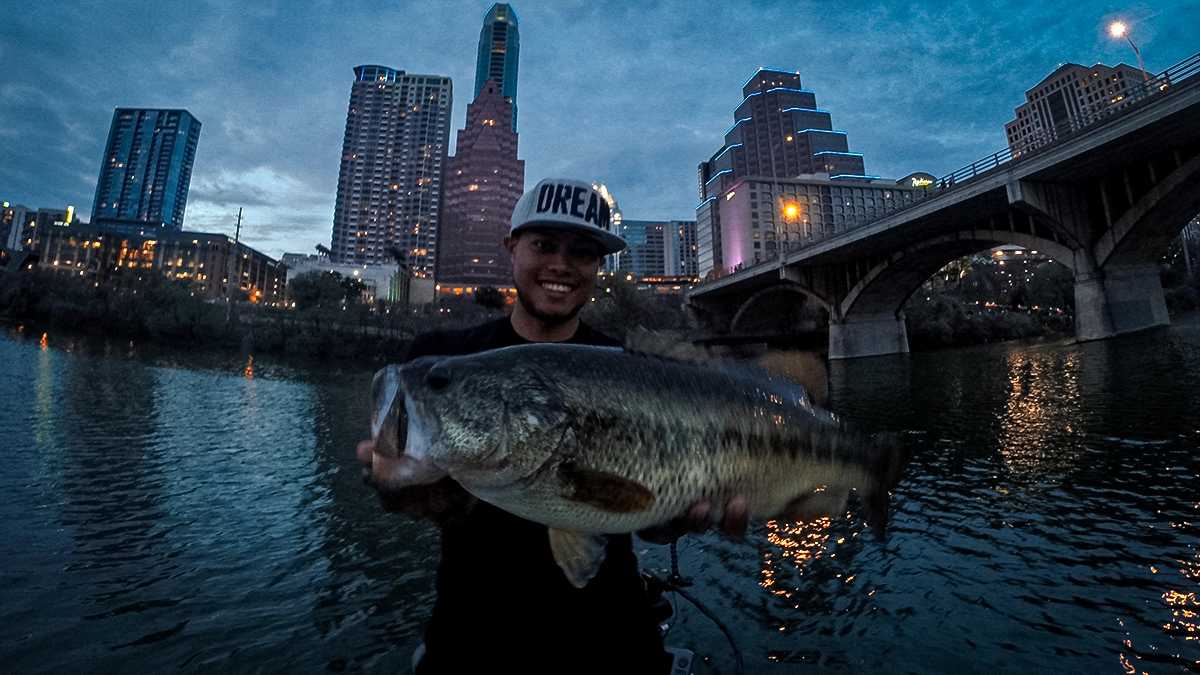
Other lakes in the state still offer chances at big largemouth, especially those receiving kokanee salmon or rainbow trout plants. Hopefully, the 100% catch-and-release movement will encourage anglers to harvest more smaller bass, allowing remaining bass to reach trophy size. This selective harvest would provide more space and food for the giants to grow.
Texas
Texas has become the premier destination for big bass, with fisheries like Lake Fork and O.H. Ivie making it one of the best states to target trophy largemouth bass. The Texas ShareLunker program promotes the big bass culture by taking angler-submitted pure Florida-strain largemouth to breed and distribute throughout the state.
Some lakes, like Fork and Ivie, are large enough to absorb the crowds drawn to them. However, others are not, and out of respect for local anglers, I encourage you to do some research and discover bodies of water that are less well-known but still offer great big bass opportunities. Texas publishes information on where ShareLunker fingerlings are released on its website — a good starting point since you can’t catch big bass where they don’t exist. Many hidden gems aren’t known to the public, giving you a better chance of achieving your big-bass goals.
These lesser-known waters are where I love to spend my time. While popular lakes can be exciting when they’re hot, they often diminish in returns due to fishing pressure and delayed mortality. The real thrill for me lies in discovering the next trophy bass location — the process of learning and exploring.
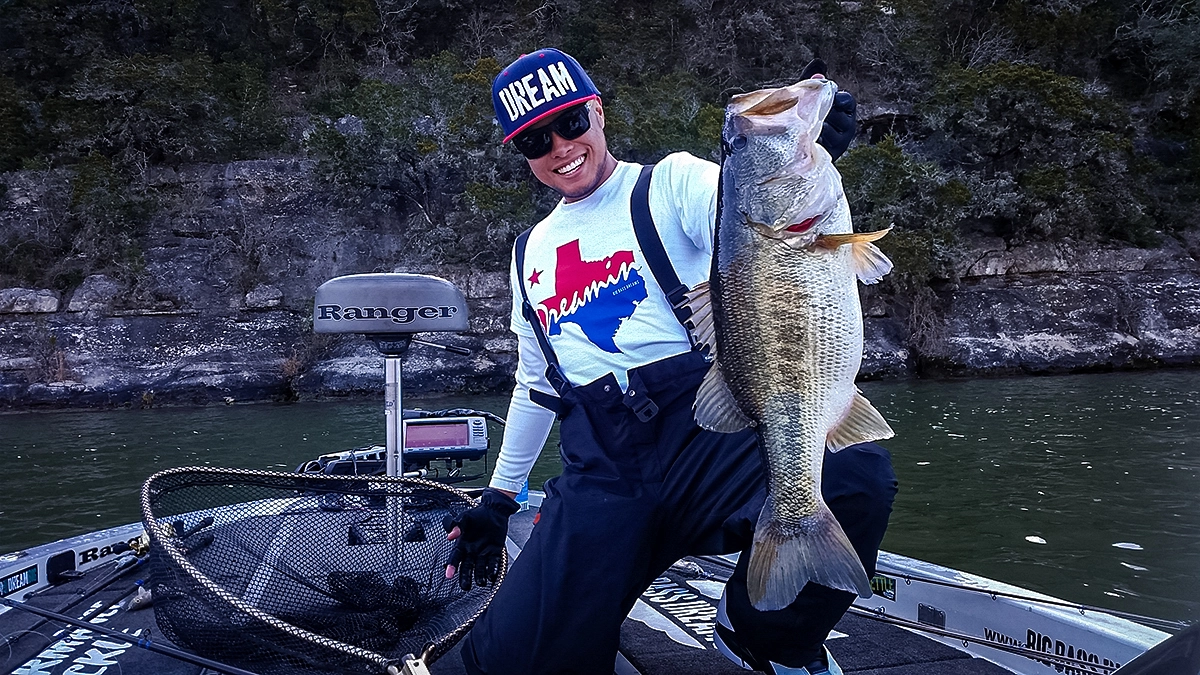
The Smokey Mountains
This region spans multiple states, including Tennessee, Georgia, and North and South Carolina. For years, anglers kept the secret of giant largemouth in these waters close to their chest. Pioneers like Jeremy Pratt helped bring big-bait fishing to the region, and although fishing pressure and popularity have made these lakes tougher, they still produce some giant bass.
For guidance, reach out to local expert guides like Fred Stepp, who specializes in big bait fishing. The combination of deep, clear water, the presence of brown and rainbow trout, and local bass knowledge is key to cracking the trophy bass code in this region.
Virginia
Virginia, the state “for lovers,” is also becoming known for big bass and big bait. Florida bass experiments in local waters are starting to yield larger individual fish and five-fish limits. Matt Strykul (SBFishing on YouTube) regularly catches bass in the 7- and 8-pound range, and it wouldn’t surprise me if some of these lakes soon produce steady double-digit catches.
The Chickahominy River and its connection to the James River have also produced Florida bass, attracting tournament anglers like myself in search of kicker-sized largemouth. Don’t overlook this state, as it’s becoming a hotbed for big bait and trophy bass culture.
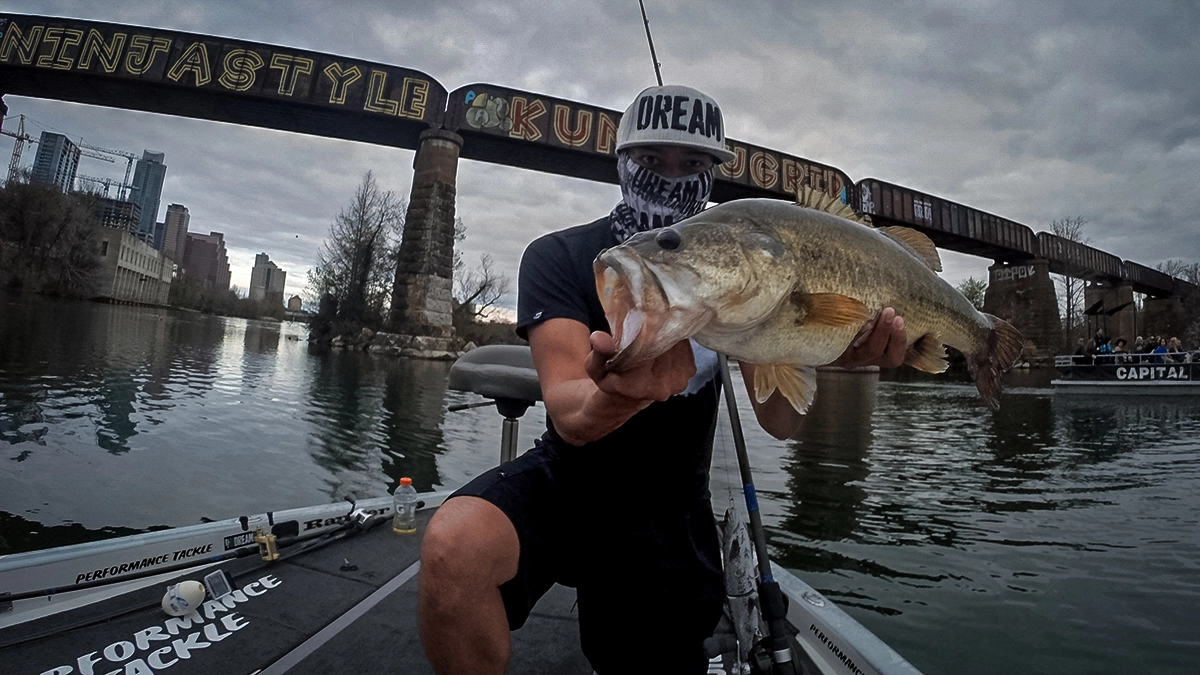
Northern Strain Fish
While states with Northern strain bass may not have Florida genetics, they still offer overlooked bass fishing opportunities. These bass rarely reach double digits, but they can still provide great fishing relative to their region. States like Washington, Oregon, Minnesota, New York, Connecticut, Vermont, and Massachusetts are home to largemouth bass that weigh 7-9 pounds, and many of these bodies of water are worth exploring.
I’ll be traveling through some of these states in May and June, hoping to catch 22-26-inch bass during the pre-spawn window when they’re at their peak weight.
—
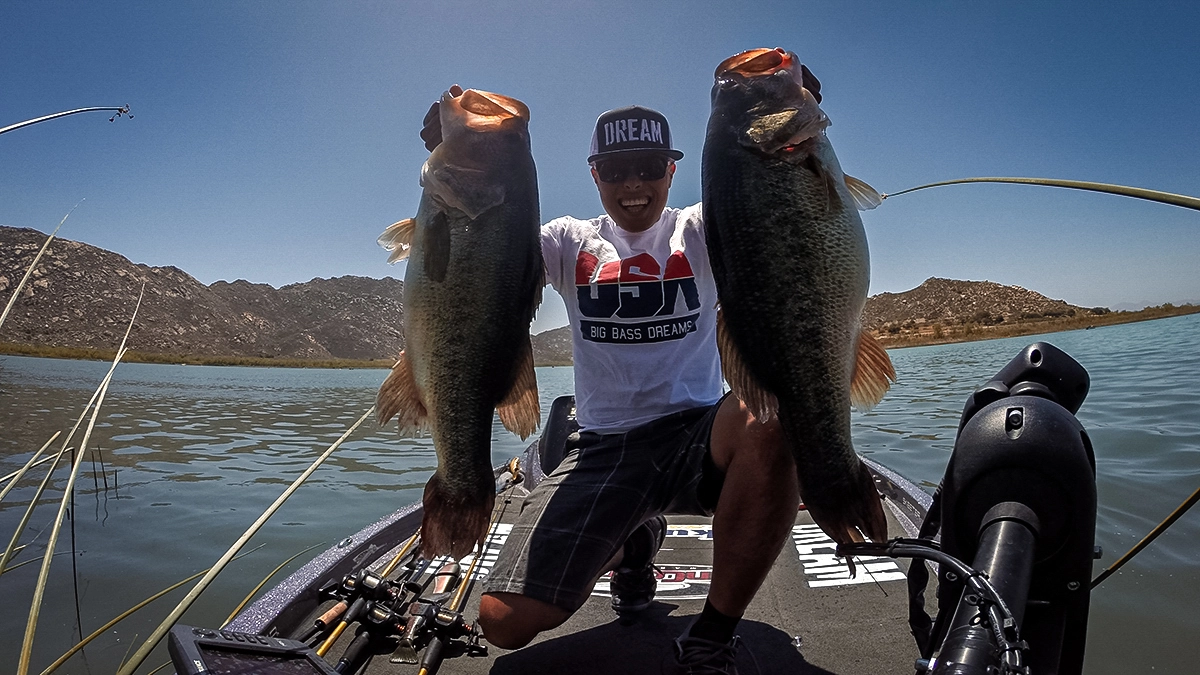
There are plenty of opportunities to chase big largemouth bass across the United States. The diverse environments, backdrops, and anglers dedicated to these fish make the U.S. the greatest country in the world for anglers.
Do your homework, organize your tackle, consult local experts for some basic information, and dive into the puzzle that is big bass fishing. Embrace the challenge, the tough days, and the feeling of hopelessness, because when you finally land that strike from the biggest bass you’ve ever seen, I promise you there’s nothing better.
